Docx files for personal book: Verbum 9 part 1; Verbum 9 part 2; Verbum 9 part 3; How to use the Verbum Lectionary and Missal; Verbum 8 tips 1-30; Verbum 8 tips 31-49
Please be generous with your additional details, corrections, suggestions, and other feedback. This is being built in a .docx file for a PBB which will be shared periodically.
Previous post: Verbum Tip 5j Next post: Verbum Tip 5l
Bible Search – the star, the < >, and the drop-down menu i.e. reuse a search
The Bible search panel:
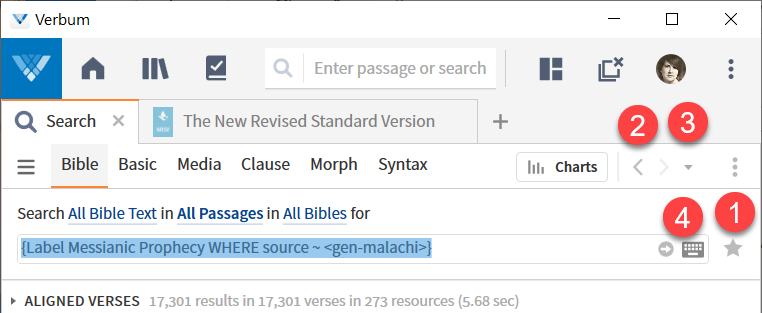
The star – save to favorites
Setup:
- Open Favorites by “Show Favorites” in Command box or Tools à Library à Favorites
- Run a search of your choice
This function stores the search argument in Favorites – simply click on the star. To rerun the search simply click on it in Favorites.
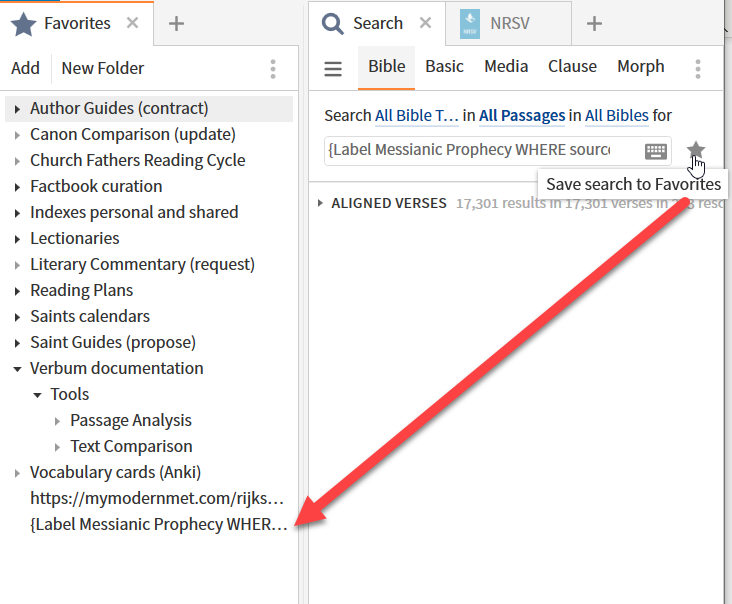
The < > -- previous and next navigation
Setup:
- Run two or three separate searches in the same search panel.
Current search:
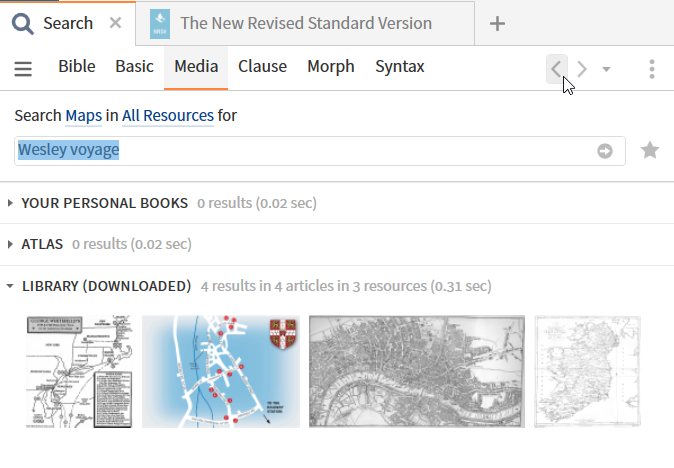
Select prior search as stored in search history by clicking on <.
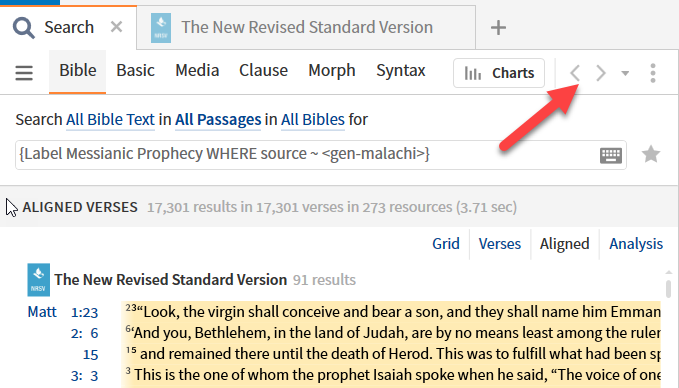
Select next search as stored in search history by clicking on >.
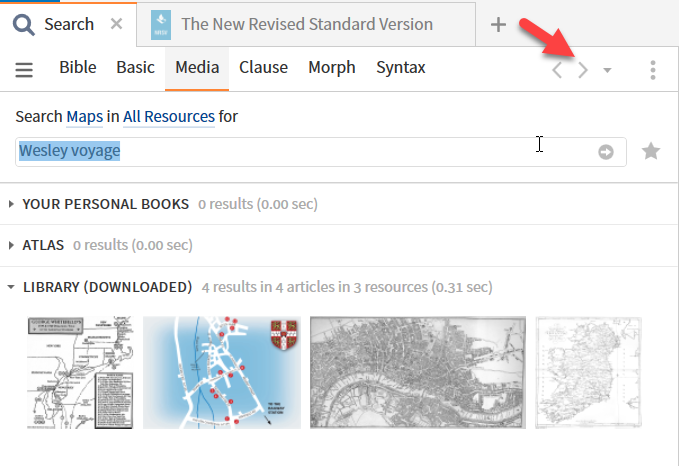
History menu
When viewing the history, one can click on any entry and jump to rerun that search.
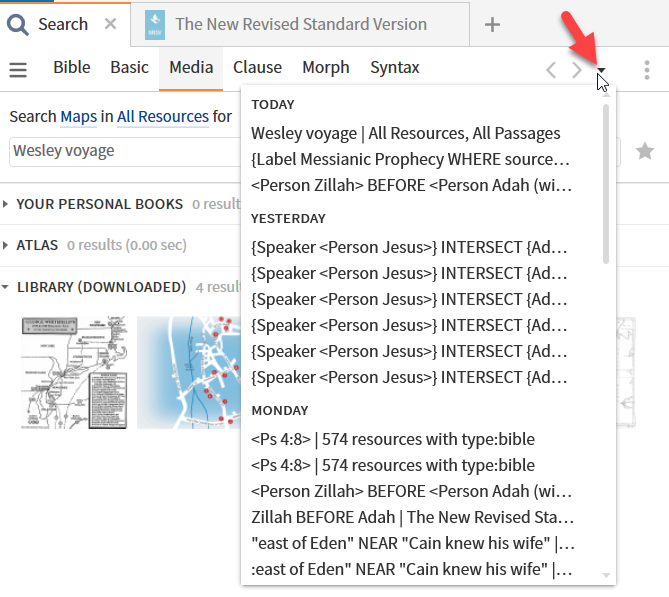
The keyboard
Unrelated except by the physical location of its icon is the option to set the keyboard to default (user interface language), Greek, or Hebrew.
From Verbum Help:[quote]
How to Type Greek or Hebrew Text and Switch Between Keyboards
For help with these keyboards, visit the Logos forums.
Install keyboards (Windows)
1. Download and install keyboards for Ancient Languages.
2. Once the keyboards are installed, switch input languages by pressing Windows Key+Spacebar. (This can be modified in Control Panel > Region and Language > Keyboards and Languages > Change Keyboards > Advanced Key Settings.)
Install keyboards (Mac)
1. Open System Preferences > Keyboard > Input Sources.
2. Click + to add additional keyboards.
3. Select the desired keyboards.
4. Once the keyboards are installed, switch input languages by pressing Ctrl+Spacebar.
Use the untransliteration feature in Logos
Type g: for Greek, h: for Hebrew, and a: for Aramaic in front of the transliterated word and choose the correct search term from the list. For example, typing g:logos in a Search panel will bring up matches beginning with λόγος. Typing h:mym will bring up matches beginning with מַיִם.
Learn more about Untransliteration.
How to Use the Keyboard Selector
Note: This feature is only available in the Verbum desktop application. Users can deactivate the Keyboard Selector in the Program Settings menu.
The Keyboard Selector appears in input boxes where entering original language characters might be desirable. Users can choose between Default, Greek, and Hebrew by clicking the keyboard icon and selecting the desired language. It is also possible to toggle between keyboards by pressing Ctrl + Alt + Space (Windows) or Ctrl + Cmd + Space (macOS). Pressing the Caps Lock key toggles Verbum between the default language and an original language, so users can quickly enter search operators and switch back to the original language with minimal interruption.
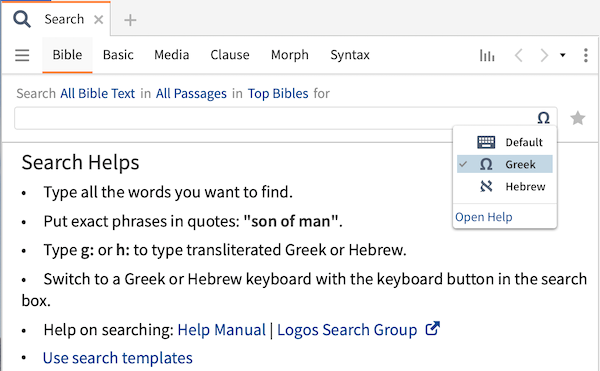
After entering text, press Enter to search the surface text, or (for best results) select the relevant word from the dropdown list that appears.
The Keyboard Selector is activated by default, but users can deactivate it in the General section of the Program Settings menu.
English/Hebrew Keyboard Map
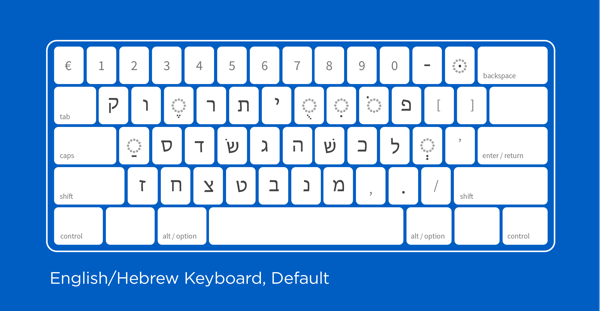
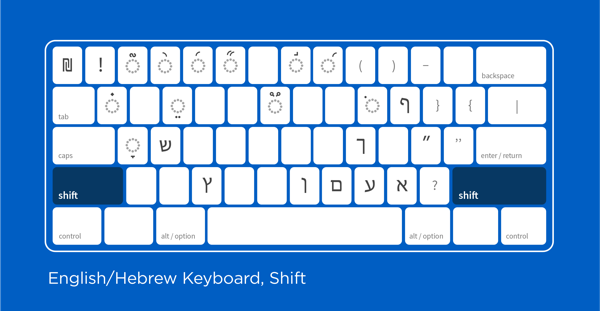
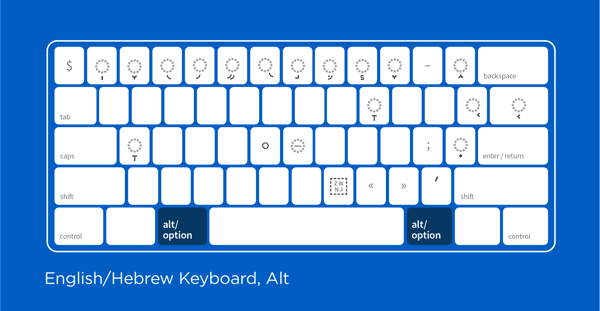
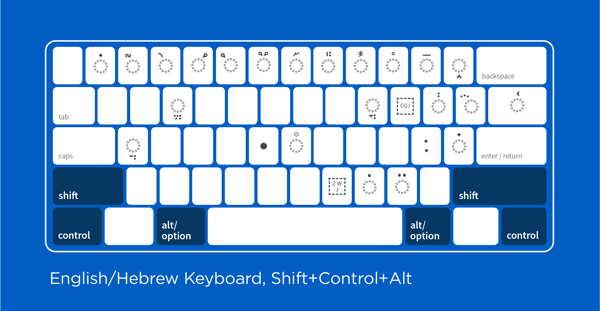
English/Greek Keyboard Map
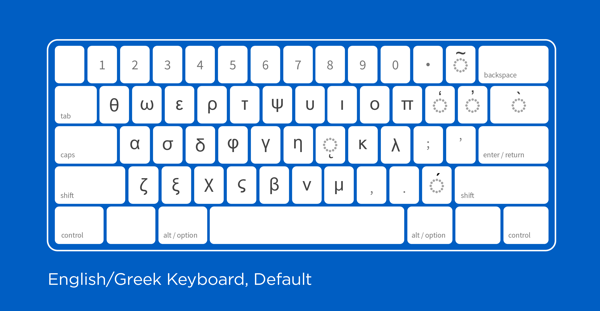
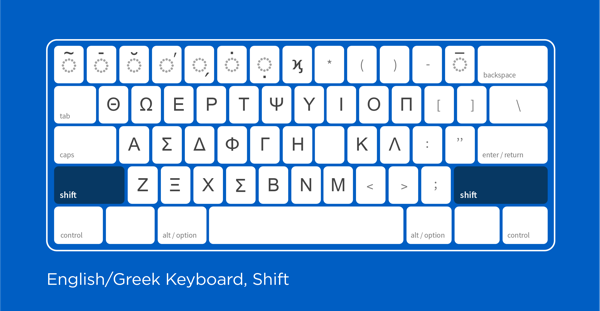
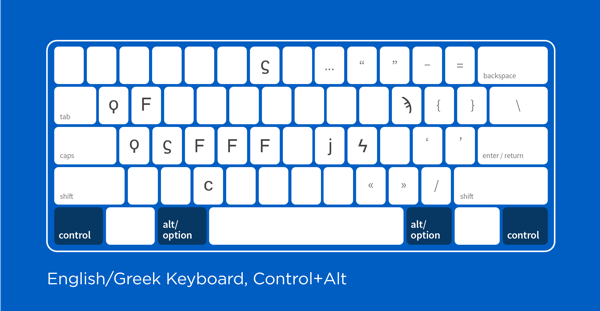
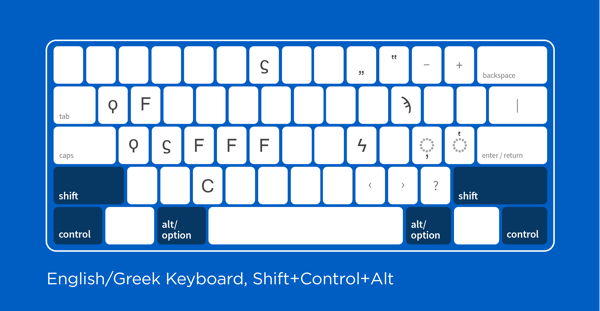
Entering Hebrew Text
Right to Left
Remember that Hebrew runs right to left. When the Hebrew keyboard is active, backspace will remove the character to the right of the cursor. Vowels should be entered after their corresponding consonant. Morphological searches or searches with operators still work from left to right, even though Hebrew words or phrases are written right to left.
Examples:
• Type גָדָל by entering gimel, qamets, dalet, qamets, lamed
• lemma:גדל@Va will return results (lemma:aV@גדל will not)
• lemma:גדל@Va BEFORE lemma:הלך returns the result וַיִּגְדַּ֖ל הָאִ֑ישׁ וַיֵּ֤לֶךְ הָלוֹךְ֙
Vocalization, Punctuation, and Cantillation Marks
Both surface searches (pressing Enter) and query picker suggestions (selecting from the dropdown) are not sensitive to vocalization, punctuation, or cantillation marks.
For example:
• Entering גדל OR גָדָל and pressing Enter displays results for any occurrences of that sequence of consonants (such as גדל, גֹ֨דֶל, or גָדַ֣ל). Verbum will not return results for גדל with a prefix or suffix (such as גִּדַּ֣לְתִּי).
• Entering גדל OR גָדָל and selecting the lemma from the dropdown menu returns all the results for that lemma, including those with prefixes and suffixes (e.g. גִּדַּ֣לְתִּי).
To find an inflected form of a Hebrew word:
• Use the Basic, Bible, or Morph search types to enter the consonantal text of the inflected form of the word (e.g. אגדל) and press Enter. or
• Use the morph picker in the Morph search:
1. Type the Hebrew word,
2. Select the lemma from the search query dropdown,
3. Toggle to Default input
4. Type @ to the right of the Hebrew word. Then select characteristics to search for.
The resulting query should look similar to this: lemma:גדל@V.
Alternatively, users can type a query following the pattern above.
Note: Be sure to enter lemma: or root: before typing the Hebrew letters. Remember, pressing the Caps Lock key toggles the input back to the system language.
To perform a search sensitive to cantillations marks:
Create a new syntax search and ensure the Lexham Hebrew Bible: Cantillation Database is selected.
Entering Greek Text
Accents and Breathing Marks
Both surface searches (pressing Enter) and query picker suggestions (selecting from the drop-down) are not sensitive to accents or breathing marks.
Examples:
• Input breathing marks and accents after its corresponding letter. For example, enter οὐδέ by typing (1) omicron, (2) upsilon, (3) smooth breathing mark, (4) delta, (5) epsilon, (6) acute accent.
• When entering εις, the query will suggest both εἰς and εἷς.
• Input εις and press Enter without selecting a lemma to return results for both surface forms (εἰς and εἷς).
Capitalization
Users can choose whether to make surface text searches case sensitive by selecting or deselecting the Match Case option in the search panel.[1]
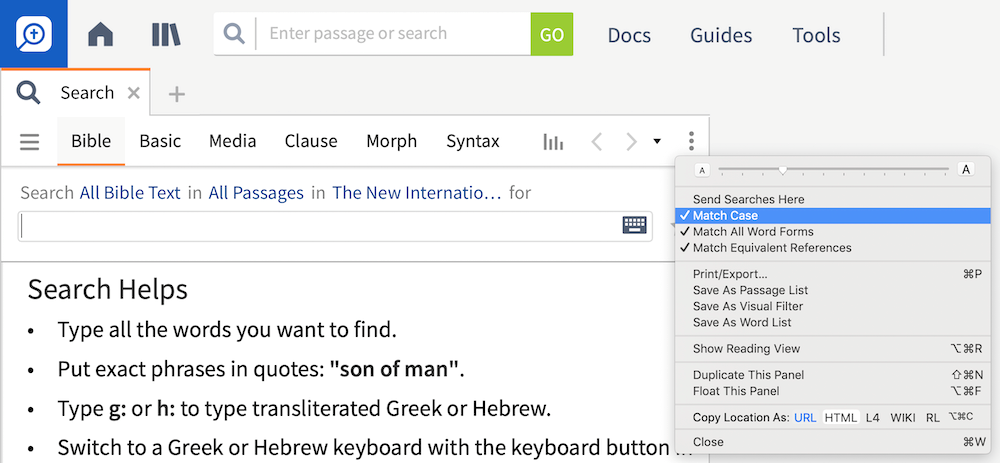
In today’s homework, remember that members ask on the forums because they could not find the answer themselves.
Homework: Search 19:
In the forums a user asked, “Can I search a collection like I can the library? Can I search for a particular title, or author, or series?” Search for the person Abraham for each of these 4 scenarios.
Homework: Search 20:
In the forums a user asked, “How can I search for everything related to oriental (Biblical) dress / costume.” Create such a search.
[1] Verbum Help (Bellingham, WA: Faithlife, 2018).